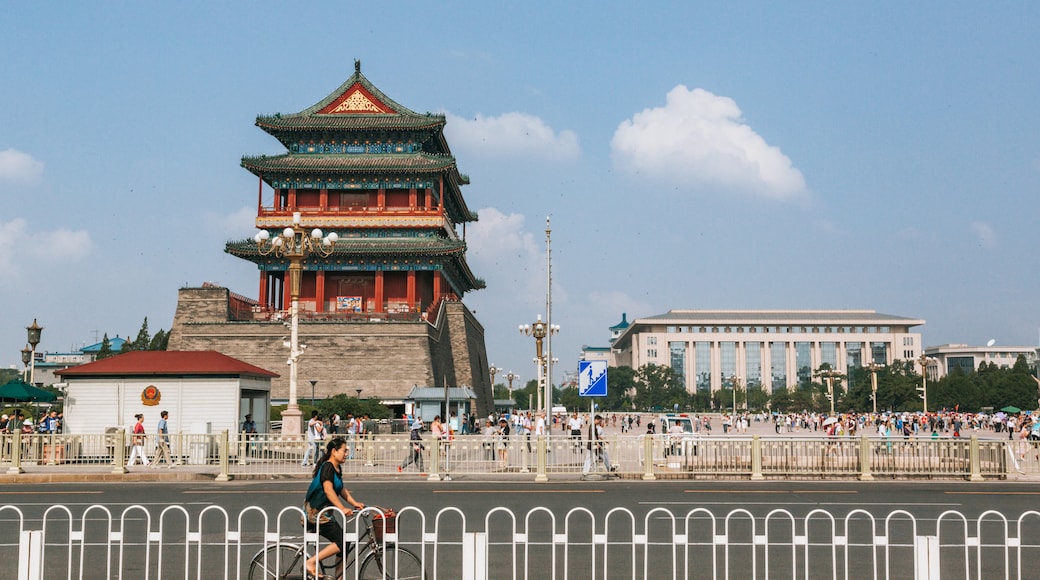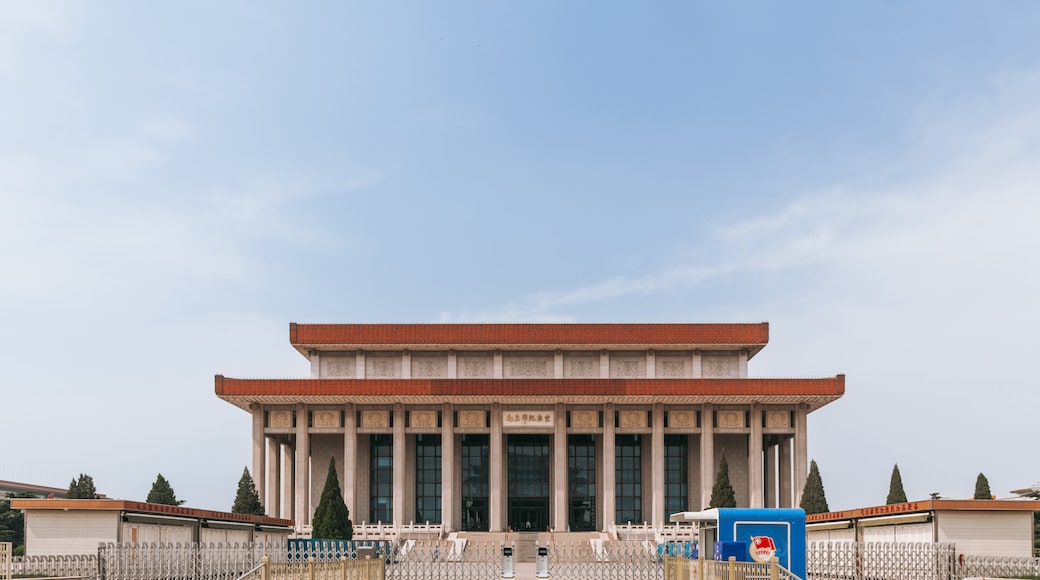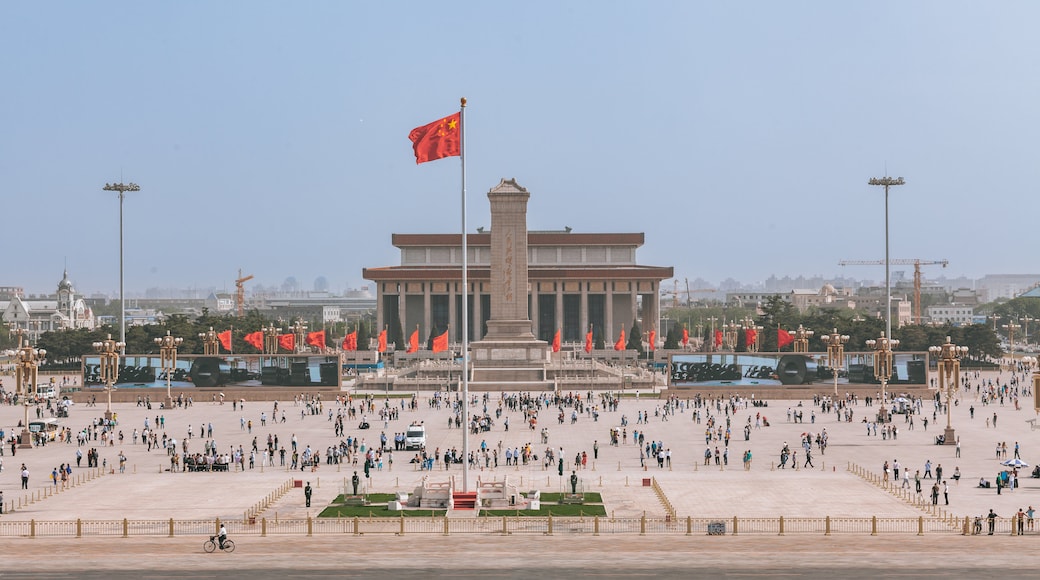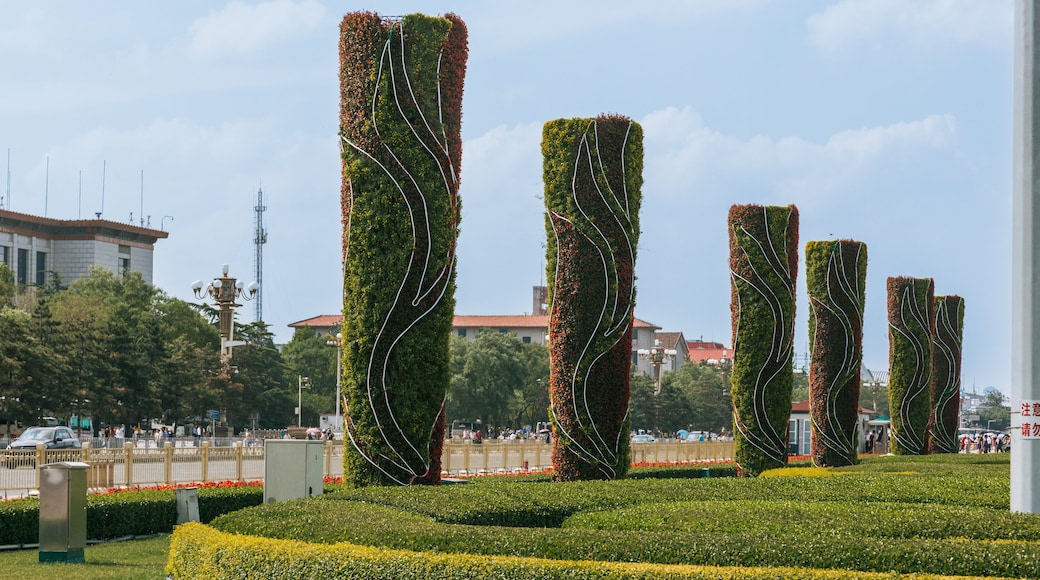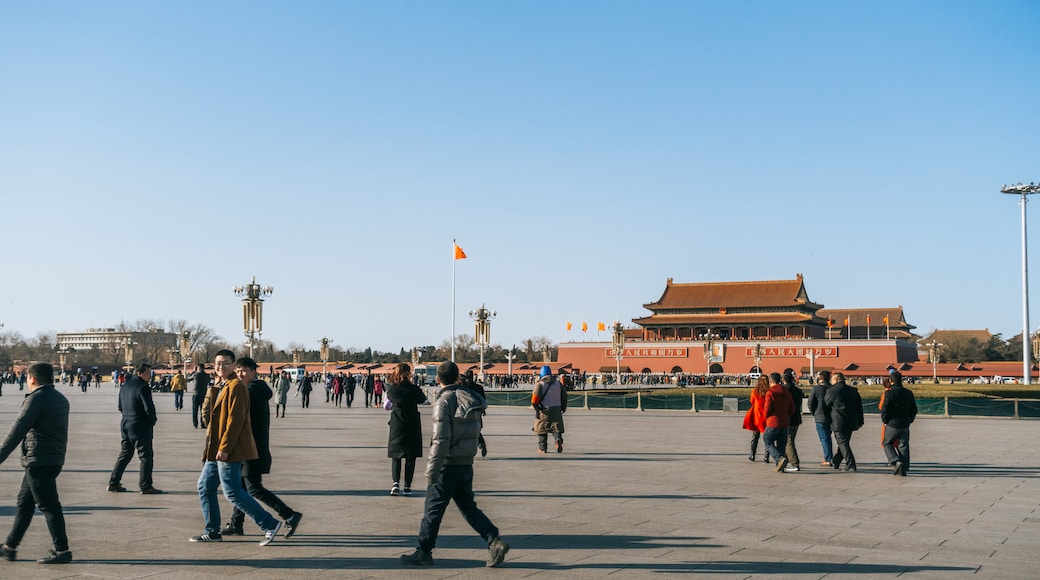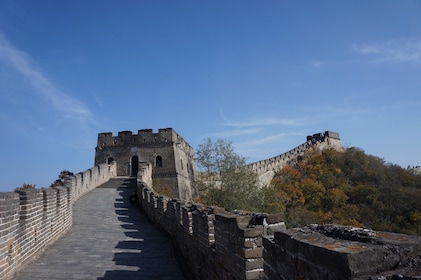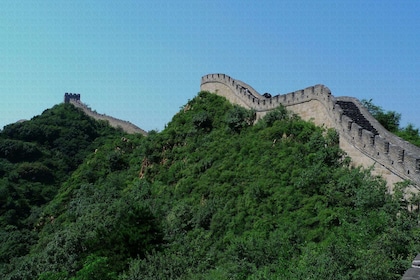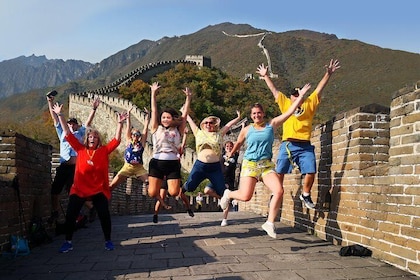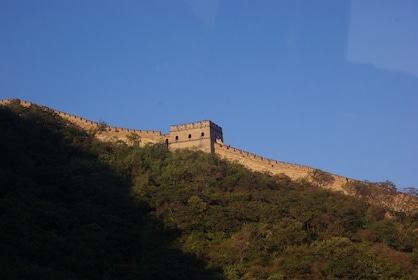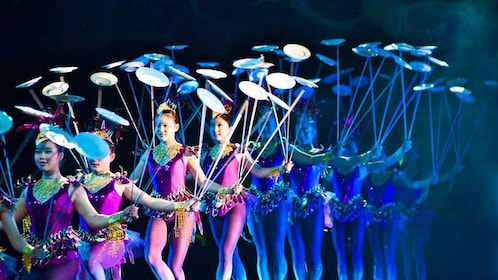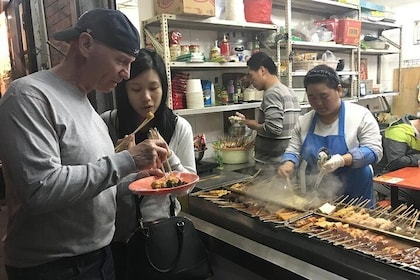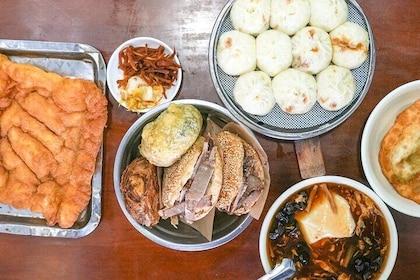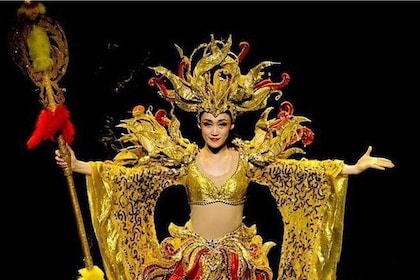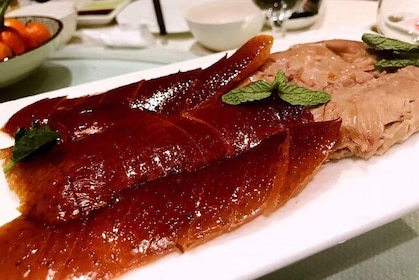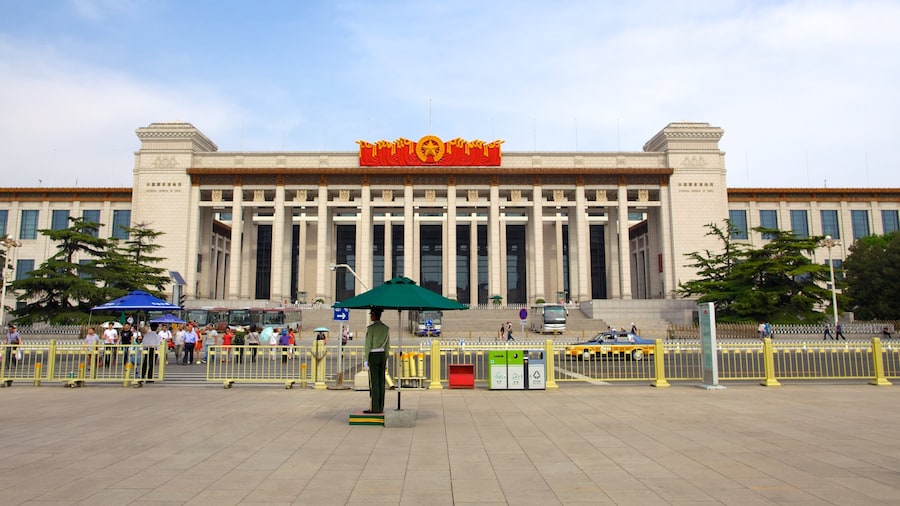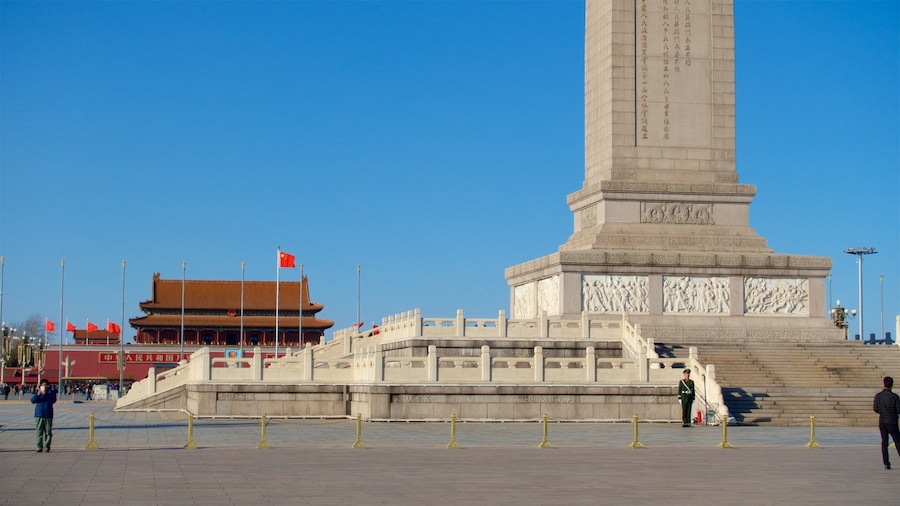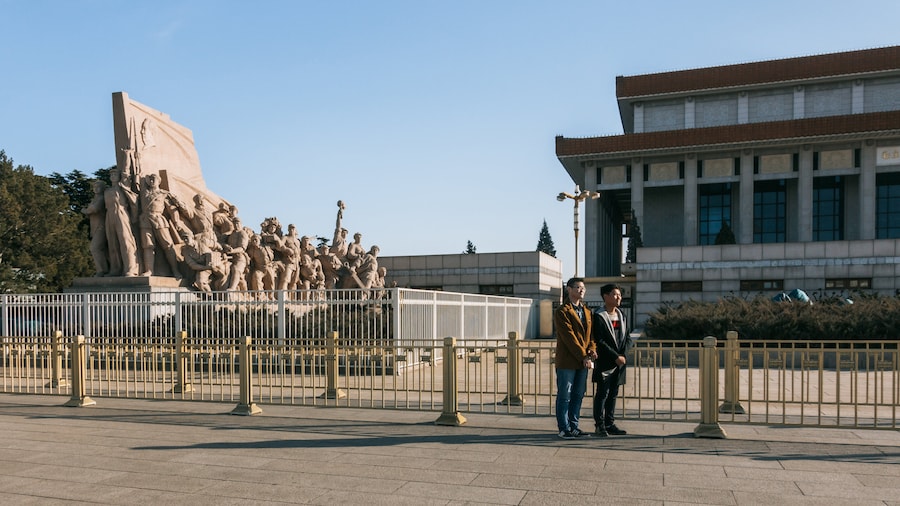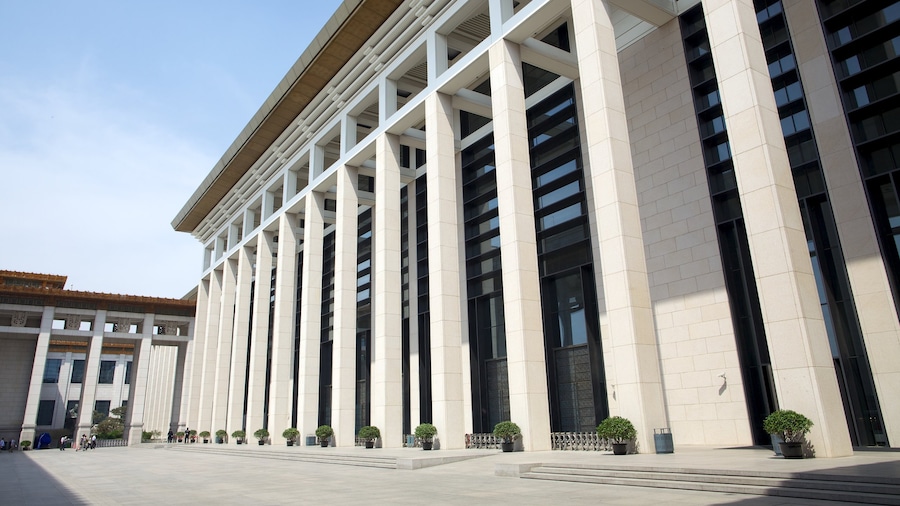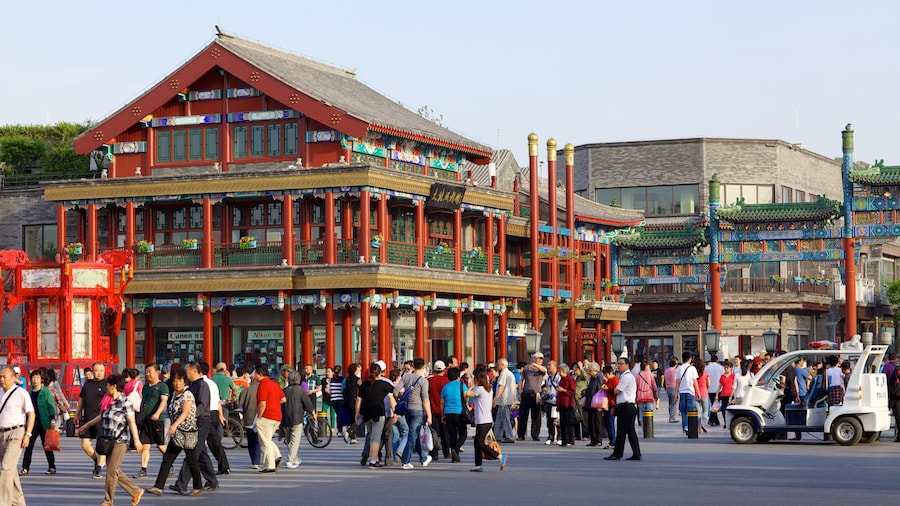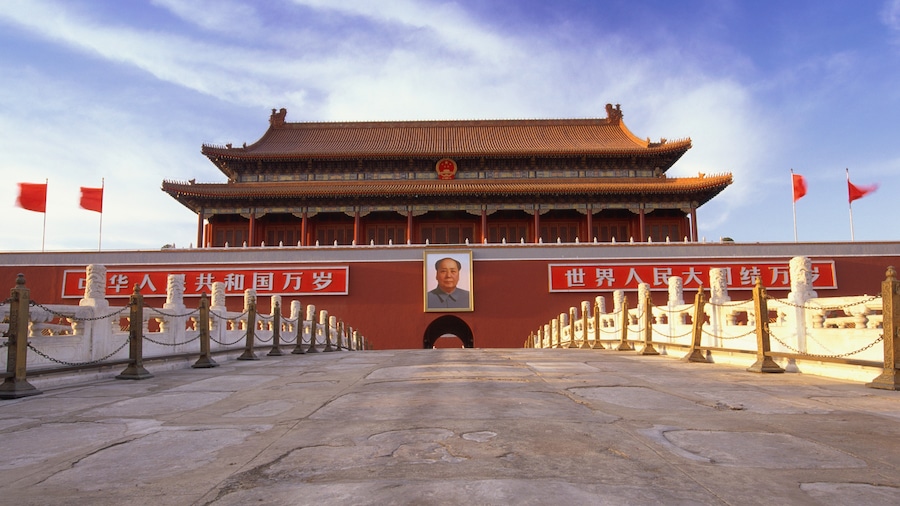The best-known landmark in the People’s Republic of China serves as a final resting place for its most famous leader.
For many, Tiananmen Square is indelibly linked with the student protests of 1989 and the crushing military intervention that followed. Within China, however, its importance dates back to the 1400s when it acted as the entrance to the Forbidden City. Visit the square to be transported to some of the most significant events in Chinese history, both ancient and modern.Tiananmen Square is bordered at either end by beautiful gates from the imperial era: the front – or Qianmen - gate and the Tiananmen Gate, roughly translated as the ‘Gate of Heavenly Peace’. Located in the heart of Beijing and near to other attractions such as the National Museum of China and the Forbidden City, it acts as a central gathering place for tourists and locals alike.Head out early to catch a free display as the People’s Liberation Army march across the square to ceremonially raise the Chinese flag first thing every morning. If you’re not an early bird, be sure to visit at dusk to see the flag being lowered in a similarly formal ceremony.Pay your respects to the body of China’s most famous leader at the Chairman Mao Memorial Hall and have your photo taken at the Monument to the People’s Heroes. Or simply kick back and fly a paper kite with the kids, which you can buy for just a few yuan from a local vendor. Be sure to behave respectfully, as the square is closely watched by security cameras and police officers, with metal detectors at the entrances.With its central location and international historic importance, no trip to Beijing is complete without a trip to Tiananmen Square. To get there, hop on the subway to Tian’anmen East, Tian’anmen West or Qianmen Station or jump straight into a taxi – any driver should know the way!
